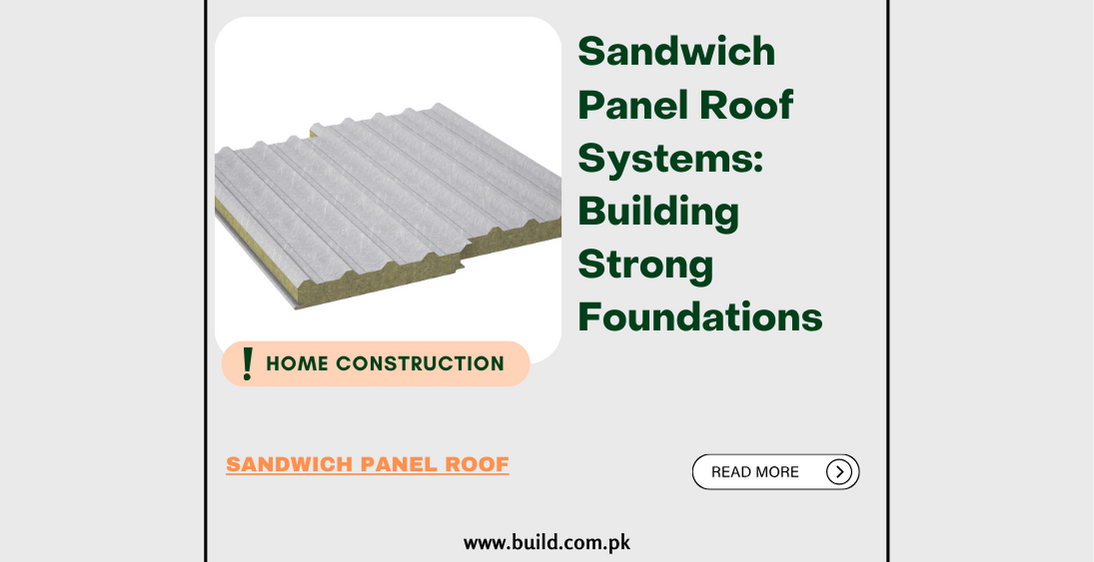Sandwich Panel Roof Systems: Building Strong Foundations

Introduction:
In the realm of construction, innovative
materials and technologies continue to rehape the landscape of building design
and functionality. Sandwich panel roof systems represent one such advancement,
offering a versatile and efficient solution for roofing needs in various applications.
In this comprehensive blog, we'll delve into the world of sandwich panel roof
systems, exploring their features, benefits, applications, and installation
processes. Whether you're a homeowner, contractor, architect, or simply curious
about modern construction techniques, read on to discover all you need to know
about sandwich panel roofs and their role in contemporary building projects.
Understanding Sandwich Panel Roof Systems:
Sandwich panel
roof systems consist of a core material sandwiched between two layers of metal
or other materials, forming a composite structure that offers superior
strength, insulation, and weather resistance. The core material can vary
depending on the specific requirements of the project, with options including
expanded polystyrene (EPS), polyurethane (PU), polyisocyanurate (PIR), and
mineral wool. Sandwich panel roofs are known for their lightweight
construction, ease of installation, and excellent thermal and acoustic
insulation properties, making them ideal for a wide range of applications.

Key Features and Benefits
Lightweight Construction:
Sandwich panel roof systems are lightweight compared to traditional roofing aterials, reducing structural load and enabling faster and more cost-effective construction.
Thermal Insulation:
The core material of sandwich panels
provides excellent thermal insulation, helping to maintain comfortable indoor
temperatures and reduce energy consumption for heating and cooling.
Sound Insulation:
Sandwich panel roofs offer effective sound
insulation properties, minimizing noise transmission from external sources and
creating a quieter and more comfortable indoor environment.
Weather Resistance:
Sandwich panel roofs are highly resistant to weather elements such as rain, ind, hail, and UV radiation, ensuring long-term durability and protection for the building structure.
Versatility:
Sandwich panel roof systems are versatile and
adaptable to various architectural styles and design requirements, offering
flexibility in terms of shape, size, and finish options.
Applications of Sandwich Panel Roof Systems
Sandwich panel
roofs find applications in a wide range of residential, commercial, industrial,
and institutional settings, including:
Residential Buildings:
Sandwich panel roofs are commonly used
in residential construction for single-family homes, multi-family dwellings,
and low-rise apartment buildings.
Commercial Buildings:
Sandwich panel roofs are suitable for
commercial structures such as offices, retail stores, shopping malls, and
restaurants, offering durability, energy efficiency, and aesthetic appeal.
Industrial Facilities:
Sandwich panel roofs are preferred for industrial buildings, warehouses, factores, and distribution centers due to their strength, insulation, and cost-effectiveness.
Institutional Buildings:
Sandwich panel roofs are utilized in
institutional settings such as schools, hospitals, and government buildings,
providing reliable performance and long-term durability.
Installation Process
The installation of sandwich panel
roofs typically involves the following steps:
Roof Preparation: Ensure that the roof structure is clean,
level, and free of debris before installing the sandwich panels.
Panel Placement: Position the sandwich panels on the roof
structure, ensuring proper alignment and orientation according to the design
specifications.
Fixing and Fastening: Secure the sandwich panels to the roof
structure using appropriate fasteners, ensuring tight joints and adequate
support.
Sealing and Waterproofing: Seal the joints between sandwich
panels with weatherproof sealant to prevent water infiltration and ensure a
watertight roof.
Finishing Touches: Complete the installation by adding
flashing, trim, and other finishing touches to enhance the appearance and
functionality of the roof.
Conclusion:
Sandwich panel roof systems offer a modern, efficient, and cost-effective solutio for roofing needs in various building projects. With their lightweight construction, superior insulation properties, and versatility, sandwich panel roofs are well-suited for residential, commercial, industrial, and institutional applications. By choosing sandwich panel roofs, builders, architects, and property owners can enjoy the benefits of durable, energy-efficient, and aesthetically pleasing roofing solutions that stand the test of time. Whether you're constructing a new building or renovating an existing structure, consider incorporating sandwich panel roof systems for a strong foundation and reliable protection against the elements.









